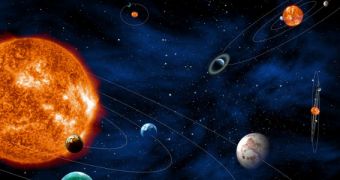Experts with the Science Program Committee at the European Space Agency (ESA) have announced recently that they have selected the Planetary Transits and Oscillations of stars (PLATO) mission for further development, aiming for a 2024 launch date.
The mission will be implemented as part of the ESA Cosmic Vision 2015–25 Program and will be the third medium-class science mission in this initiative. SPC members hope that PLATO will be able to provide satisfactory answers to two of the most important questions driving the Program.
First, experts are interested in determining the exact conditions needed for a planet to form and become capable of sustaining life. Secondly, they want to find out how the solar system works. Figuring this out could help them understand the mechanics at play in other star systems as well.
PLATO will consist of an array of 34 separate small telescopes and cameras and will be able to cover more than half of the night sky. Experts behind the mission say that this asset will be able to scan more than one million stars in our galaxy during its lifespan.
This figure is significantly higher than the one achieved by the NASA Kepler planet-hunting telescope, which was until now able to identify in excess of 3,500 extrasolar planets. Kepler's field of view is very narrow and focuses on around 150,000 stars in the Milky Way.
PLATO will investigate nearby stars by searching for signs of small brightness dips in incoming starlight. These variations are usually caused by exoplanets passing in between their parent stars and Earth. Current telescope technologies are sensitive enough to detect these dips, and they check to see if they repeat themselves at regular intervals.
In addition to detecting new worlds, the telescope array will also focus on asteroseismology studies, which reveal data on the seismic activity going on on the surface of nearby stars. These investigations will enable PLATO to calculate the mass, radius, and age of its stellar targets with ease.
The data collected by these telescopes will be combined with radial velocity observations collected from the ground, enabling astronomers to calculate the mass and radius of all newly-discovered exoplanets. In turn, these measurements will be used to calculate the density of these alien worlds, which will in turn provide insights into their composition and inner makeup.
“PLATO, with its unique ability to hunt for Sun–Earth analogue systems, will build on the expertise accumulated with a number of European missions, including CoRot and Cheops,” explains the Director of Science and Robotic Exploration at ESA, Alvaro Giménez.
“Its discoveries will help to place our own Solar System's architecture in the context of other planetary systems. All M3 mission candidates presented excellent opportunities for answering the major scientific questions that define our Cosmic Vision program,” he concludes.

 14 DAY TRIAL //
14 DAY TRIAL //